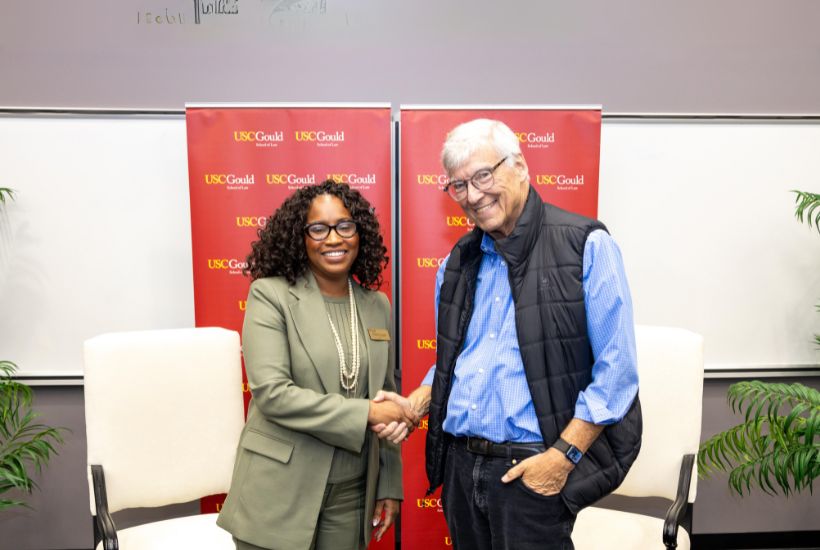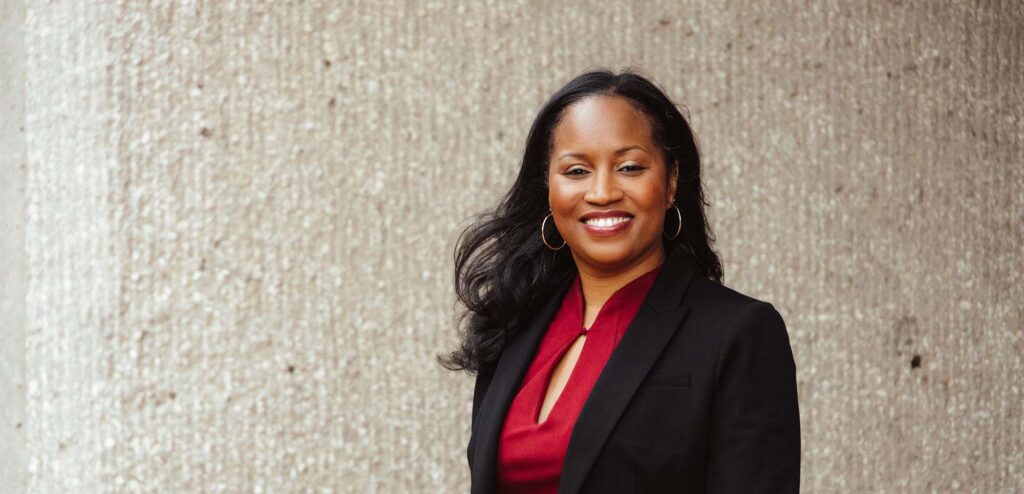Staci Riordan, Chair of the Fox Rothschild Fashion Law Practice Group, gave a presentation to USC Law students about intellectual property issues and how they affect the fashion industry.
Riordan focused her presentation on the high-profile trademark infringement case between designers Christian Louboutin and Yves Saint Laurent. Although Louboutin obtained a US Patent and Trademark for it’s signature red soles in 2008, U.S. District Judge Victor Marrero refused a request to stop the sale of all Yves Saint Laurent shoes with similar red soles.
.JPG) |
| Staci Riordan presenting to USC Law students |
Riordan gave an in-depth explanation about the case and also interjected personal insight into why Louboutin’s request failed in court.
“The choice in opponent here, I think, is very, very, very bad strategy,” she said. “It would have made more sense for Louboutin to go up against a company that is definitely trying to play off of their strong reputation – whereas Yves Saint Laurent is in the same category of high fashion and has been around for a long time.”
Sitting on the podium in front of her were the two types of shoes in question. One was a pair of black Louboutin’s with bright red soles, and the other a pair of red monotone Yves Saint Laurent platform sandals.
Riordan asked the audience to jump in and give their insight into whether or not they thought Louboutin had a valid claim in suing YSL for infringement.
“It’s just a red shoe,” one law student in the audience remarked. “It doesn’t send a message to the customer, like the red-soled Louboutin’s do. I don’t see how they can claim rights to a color.”
Riordan then showed the audience a selection of photos from the past several decades that featured the monotone shoes, but in various different styles, patterns, and colors – including red.
She joked about Christian Louboutin’s testimony and how he sent the wrong message by claiming that the red soles “gave his shoes energy” and that they were what “attracts men to the women who wear them.” She hypothesized that he should have focused more on the fact that the red soles make his brand unique and distinguishable from other fashion labels.
Riordan remarked humorously that this case was “meant for law school textbooks.”
The presentation then delved into the basics of intellectual property law for the fashion industry. Riordan discussed the definition of common fashion law jargon and gave her insight into the “You Can’t Fake Fashion” campaign – a joint initiative between EBay and the Council of Fashion Designers of America that is aimed at raising awareness against counterfeit goods and celebrating original design.
“I have issues with the whole fight fakes campaign,” Riordan said. “They are trying to confuse the public into thinking that all designs that resemble a pre-existing item are counterfeit.”
She enlightened the audience by explaining that the term counterfeit has a very specific definition.
“A counterfeit product is one that is made without permission of the brand owner,” she said. “Something that the seller is trying to pass off as an original product. In fashion, the seller will generally incorporate a brand’s logo or name, which is illegal. By doing so, the seller violates trademark law as well as federal, anti-counterfeiting law.”
Riordan explained that one of the main facets of the fashion world is inspiration, and that designers are naturally inspired by each other’s work and by what they see in their every-day surroundings.
“People can pay homage to other designers,” she said. “It’s part of the industry and it’s part of how trends develop in society. This practice is very different then counterfeiting and the CFDA should be ashamed of itself for knowingly attempting to confuse the public.”
Riordan encouraged the students in attendance to explore their interests in fashion law and re-assured them that it is a feasible and attractive legal career.
“There are ten thousand apparel manufacturing companies in Los Angeles County,” she said. “So for all of you aspiring fashion lawyers, there is a market and there is a need for your services.”
Photos by Bronte Lawson Silverstein

















